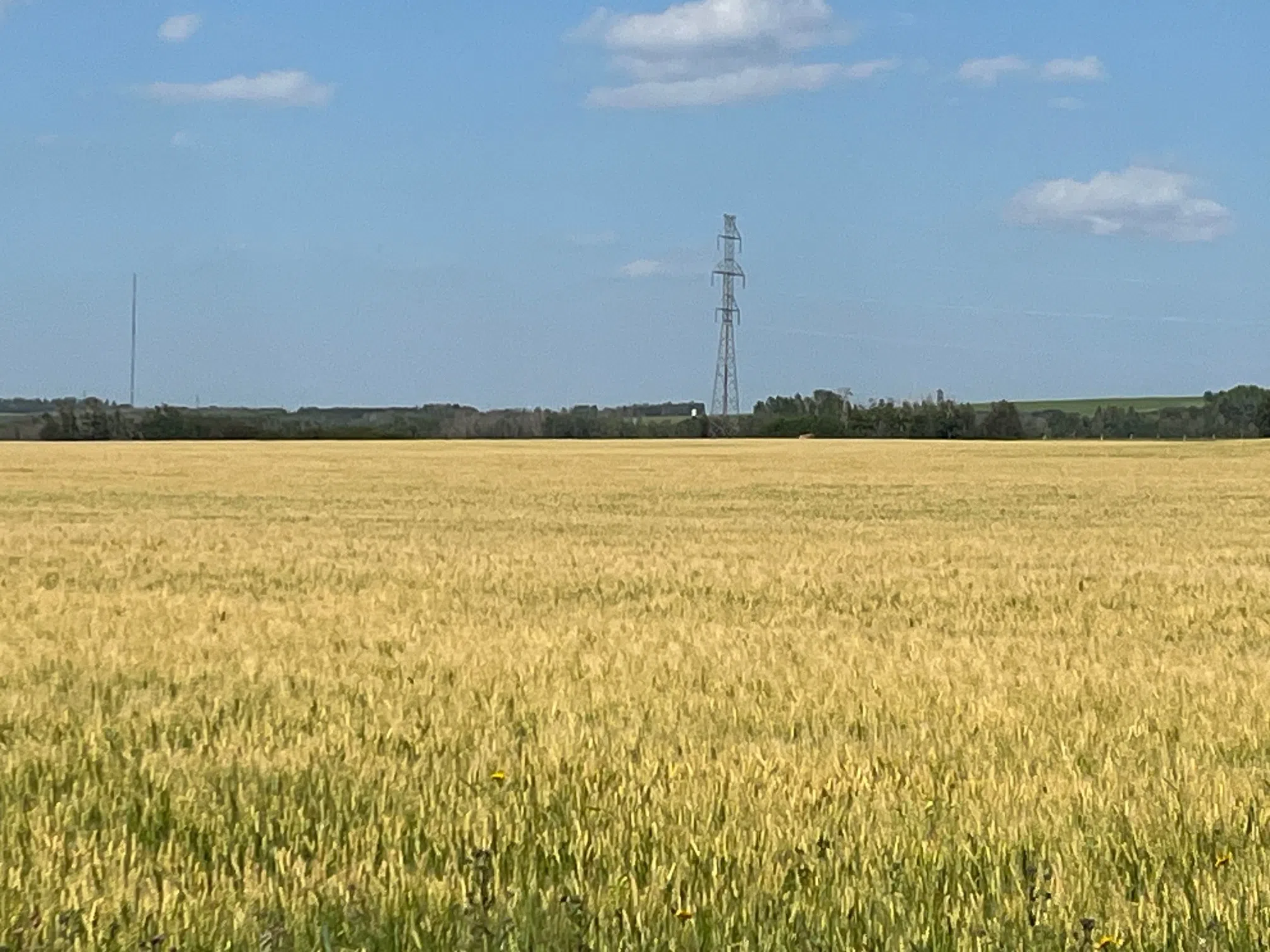As of August 12, spring cereals in the North West Region are progressing from heading to soft dough development, while fall-seeded crops are ripening.
That’s according to the latest crop report by Agriculture Financial Services Corporation (AFSC) and the Government of Alberta.
Major crop conditions are rated 69 per cent good to excellent, above the five-year average of 43 per cent. The AFSC says recent rainfall brought some relief to sub-surface moisture conditions, with good to excellent ratings now at 32 per cent.
Meantime, first cut hay is complete, with yield quality rated 75 per cent good to excellent, and an average yield of 1.2 tons per acre.
Grasshoppers are rated at five per cent above threshold, and gophers at eight per cent over threshold, but otherwise pest pressure is minimal across the province.
Harvest has begun across the province, with pulses and fall cereals making notable progress in some regions. As of this first harvest report, two per cent of all crops have been harvested provincially, which is relatively consistent with the five- and 10-year averages of three per cent.
While most regions have started harvesting fall cereals and other crops, the South Region leads with six per cent of all crops harvested, followed by the Peace Region at two per cent. The Central, North West, and North East Regions remain in the early stages of harvest, with less than one per cent combined.
Harvest for major crops are expected to pick up in coming weeks, as the growth stage for major broadleaf crops are at 94 per cent podding, four per cent above the five-year average.
Provincially, pest pressure is minimal, with only grasshoppers and gophers above threshold levels (gopher hills present in fields, and 15 plus grasshoppers per square meter) at two per cent and four per cent, respectively.
Crop conditions have reportedly remained stable in the last two weeks, with 65 per cent rated as good to excellent, above the five- and 10-year averages of 51 and 55 per cent, respectively.
Regionally, the Central leads with 94 per cent rated good to excellent, followed by the North West at 69 per cent good to excellent, the South at 64 per cent good to excellent, the North East at 59 per cent good to excellent, and the Peace Region at 25 per cent good to excellent.
The AFSC reports precipitation over the past week has improved soil moisture reserves and has brought relief to crops under stress in parts of the province, however, low moisture levels in some areas of the province may still affect crop yields. Higher moisture levels from the South and Central Regions have offset the deficit in other regions this week, resulting in relative stability in the provincial good to excellent surface soil moisture condition at 61 per cent.
Regional surface soil moisture conditions (weekly change) rated as good to excellent are reported at 58 (+3) per cent in the South, 88 (+2) per cent in the Central, 48 (-2) per cent in the North East, 43 (+4) per cent in the North West, and 32 (-3) per cent in the Peace Region. Sub-surface soil moisture conditions (weekly change) rated as good to excellent are 52 (-1) per cent provincially, 45 (-2) per cent in the South Region, 81 (-5) per cent in the Central Region, 43 (+10) per cent in the North East Region, 32 (+3) per cent in the North West Region, and 33 (-7) per cent in the Peace Region.
Regarding pasture and tame hay conditions, they continue to vary throughout the province. The Central Region reported notable improvements in good to excellent ratings for both, the South and North West Regions remained relatively stable, while the North East and Peace Regions experienced a decline.
Pasture conditions (five-year average) rated as good to excellent is now at 55 (43) per cent provincially, 48 (32) per cent in the South Region, 87 (47) per cent in Central Region, 25 (48) per cent in the North East Region, 34 (52) per cent in the North West Region, and 27 (51) per cent in the Peace Region. Similarly, tame hay conditions (five-year average) rated as good to excellent is rated 45 (46) per cent provincially, 44 (32) per cent in the South Region, 81 (48) per cent in the Central Region, 19 (44) per cent in the North East Region, 40 (57) per cent in the North West Region, 24 (50) per cent in the Peace Region.
Provincially, first cut dryland hay is 95 per cent complete with an average yield of 1.2 tons per acre, below the five- and 10-year average of 1.4 tons per acre. Regionally, the Central Region reported the highest yields averaging at 1.7 tons per acre, while the South recorded the lowest at 1.0 tons per acre.
Across the province, 44 per cent of areas expect a second cut, although only seven per cent has been completed so far. Provincial second cut hay is currently averaging 1.5 tons per acre, based on average yields in the Central, North East, and North West Regions.
For the irrigated hay, the first cut average yield is 2.5 tons per acre, while the second cut is averaging 2.1 tons per acre in the province. This is above the 5-year averages of 2.3 and 1.7 tons per acre, respectively.
Dryland yield estimates of major crops have shown modest improvement over the past two weeks, with growths observed in the Central and North West Regions, while conditions in the South Region have remained stable. The Central Region continues to report the highest expected dryland yields relative to its five-year average, with projections 37 per cent above the five-year average. The South Region follows at 29 per cent above average, and the North West Region at 10 per cent above the five-year average; however, the Peace and North East Regions continue to report projected yields below their respective five-year averages for the second week, at eight per cent and one per cent below average, respectively.













Comments